
Posted on 05/18/2011 4:54:01 AM PDT by Homer_J_Simpson

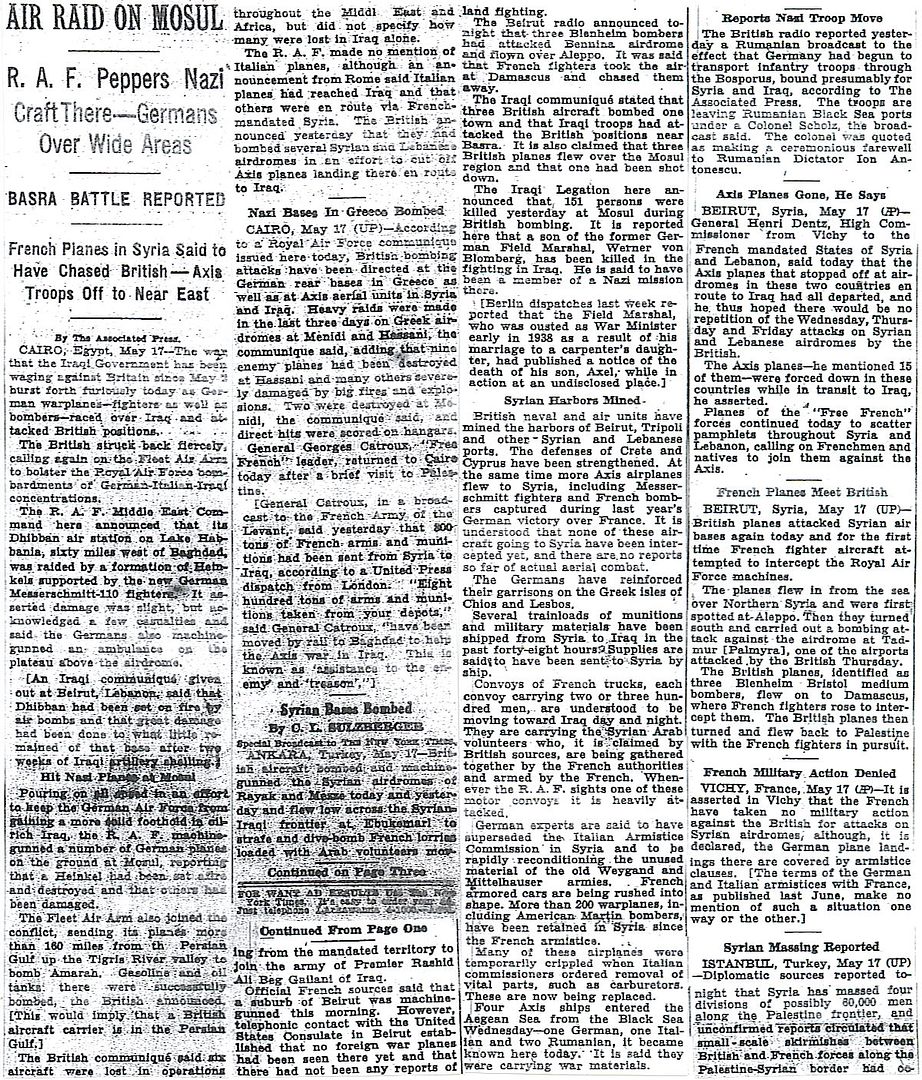
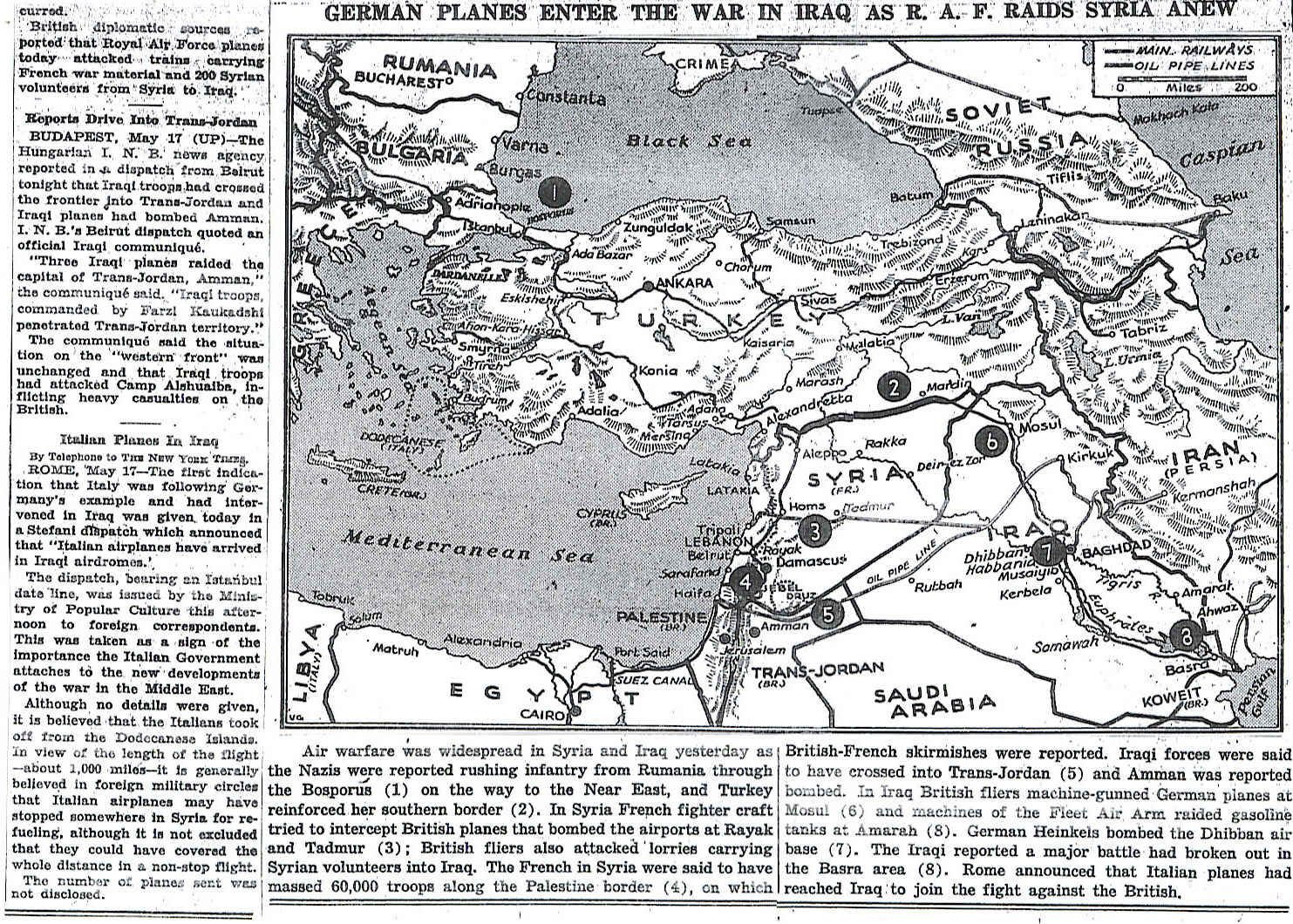
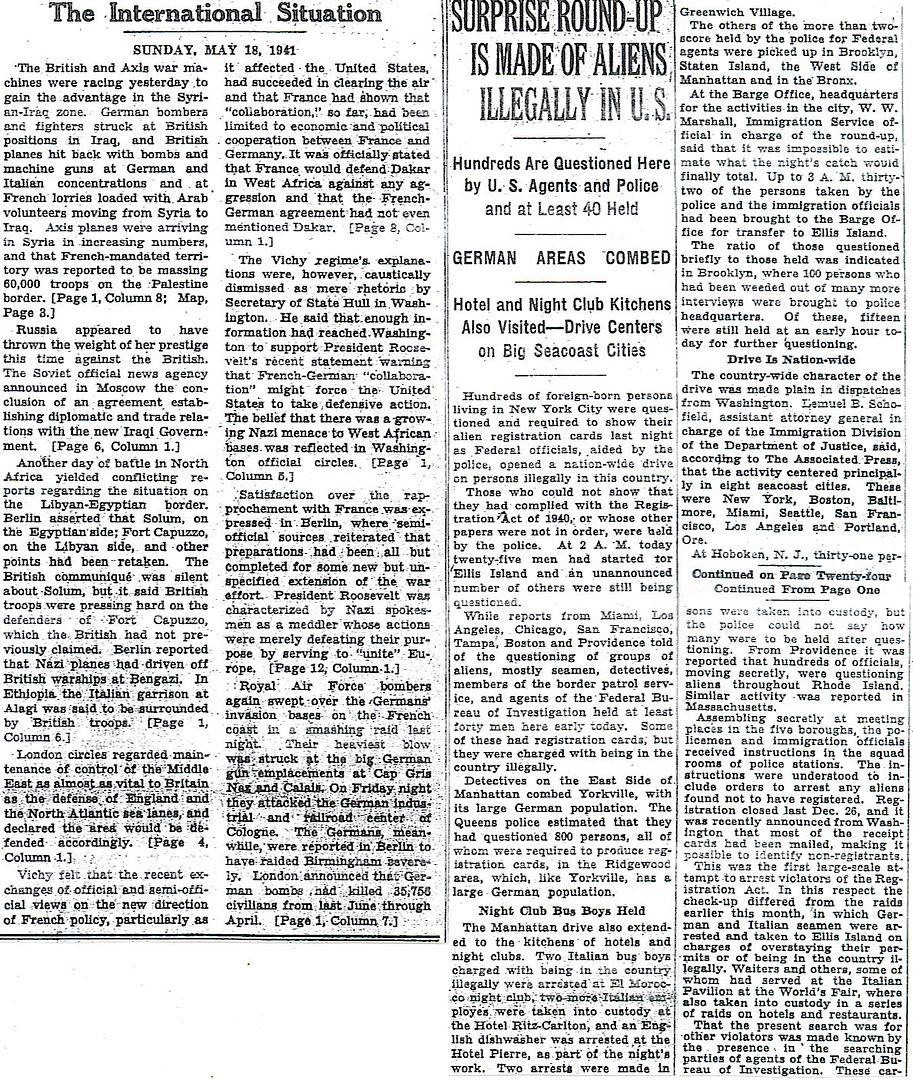
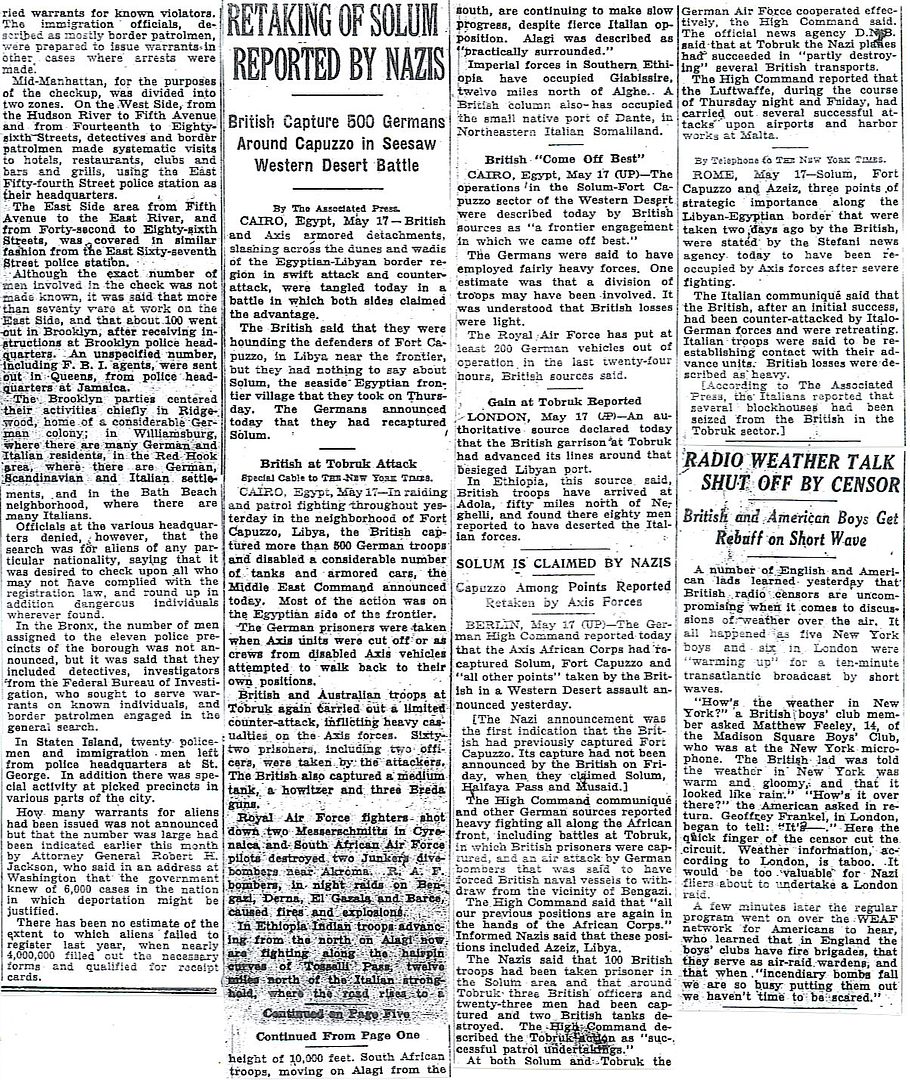
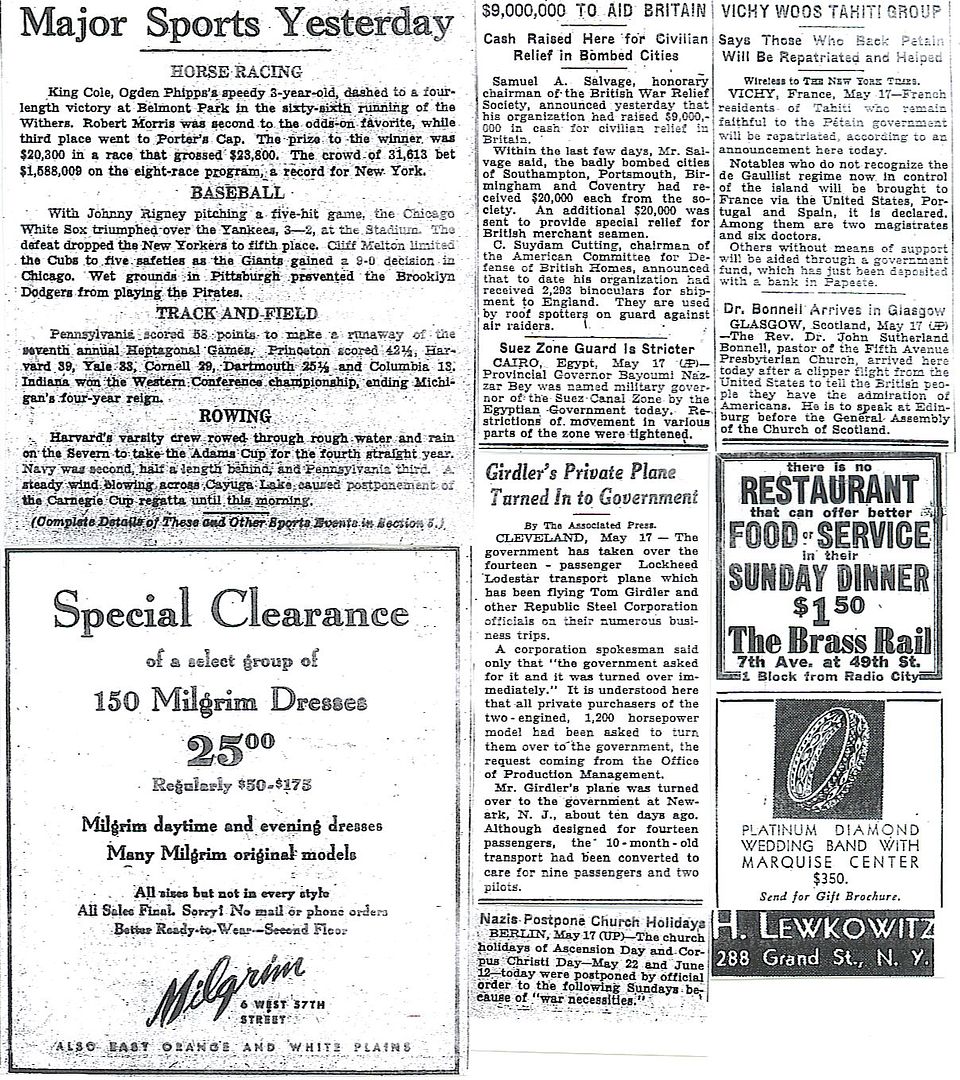

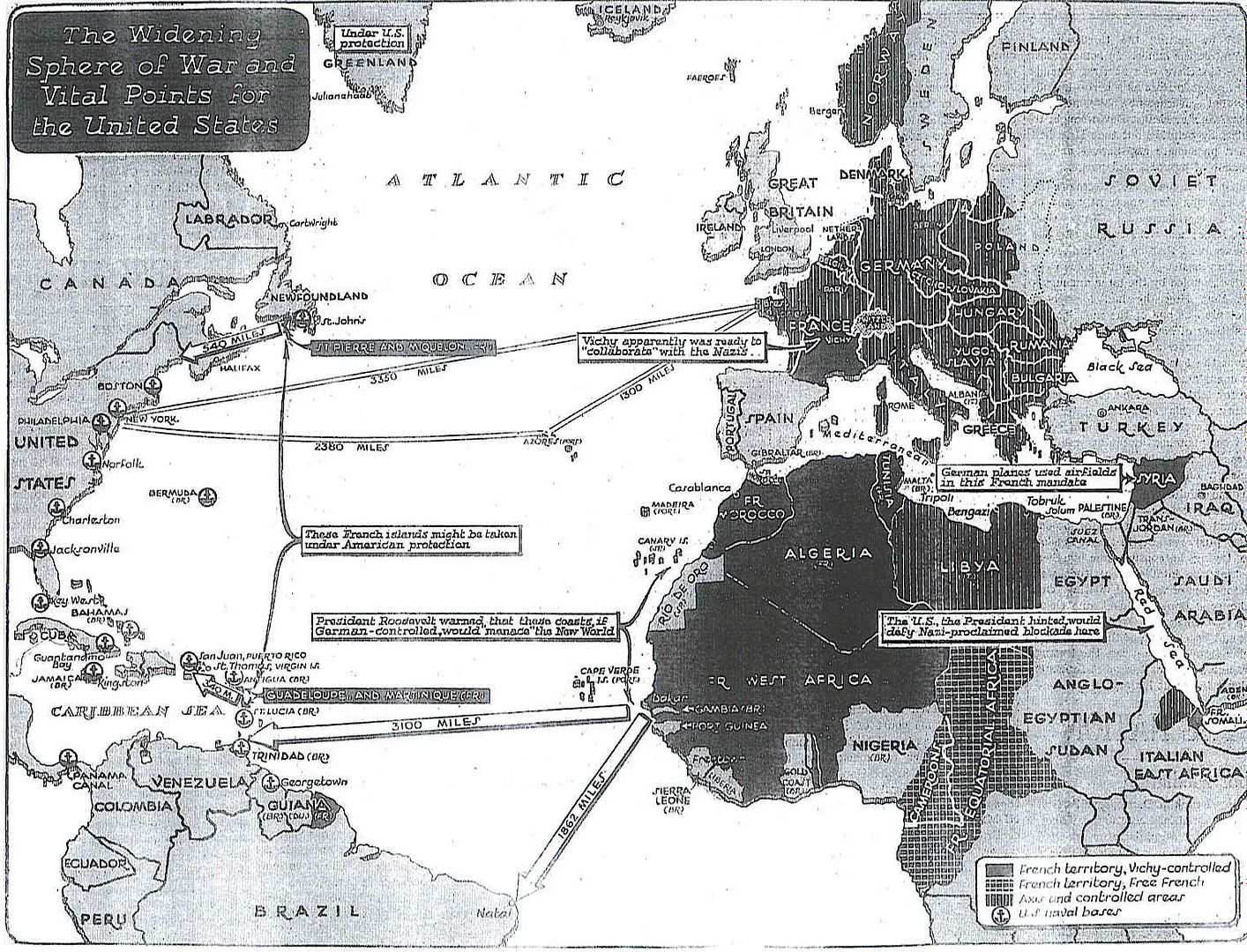
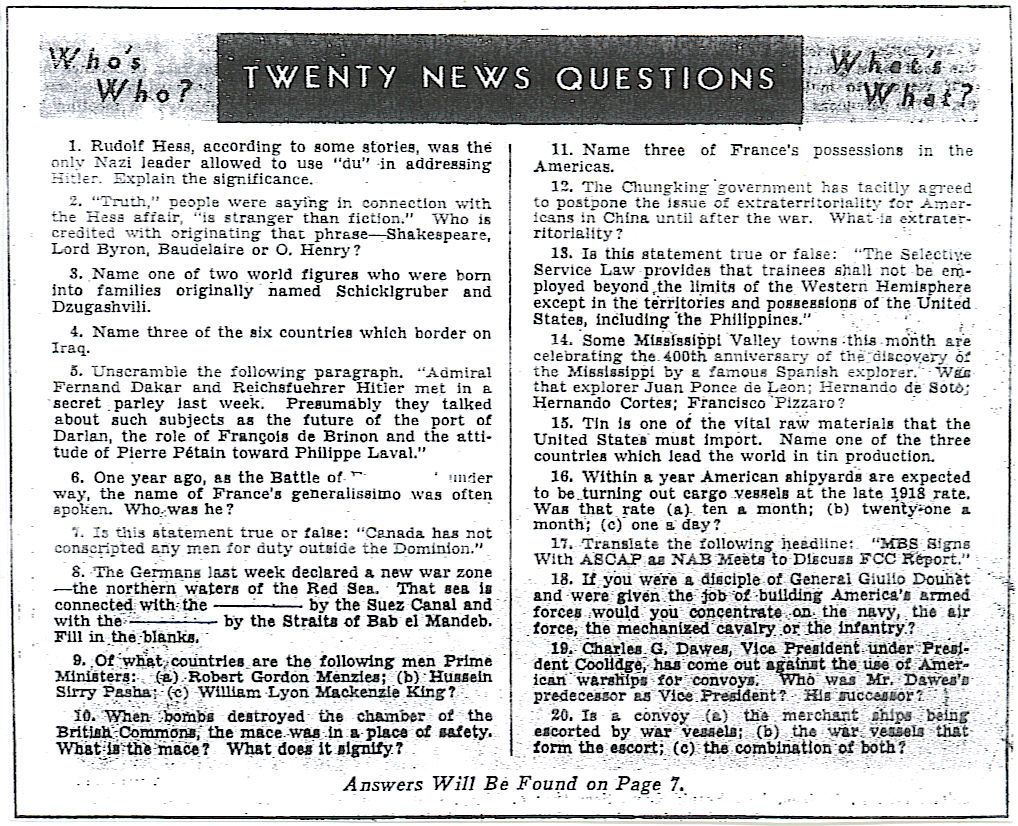

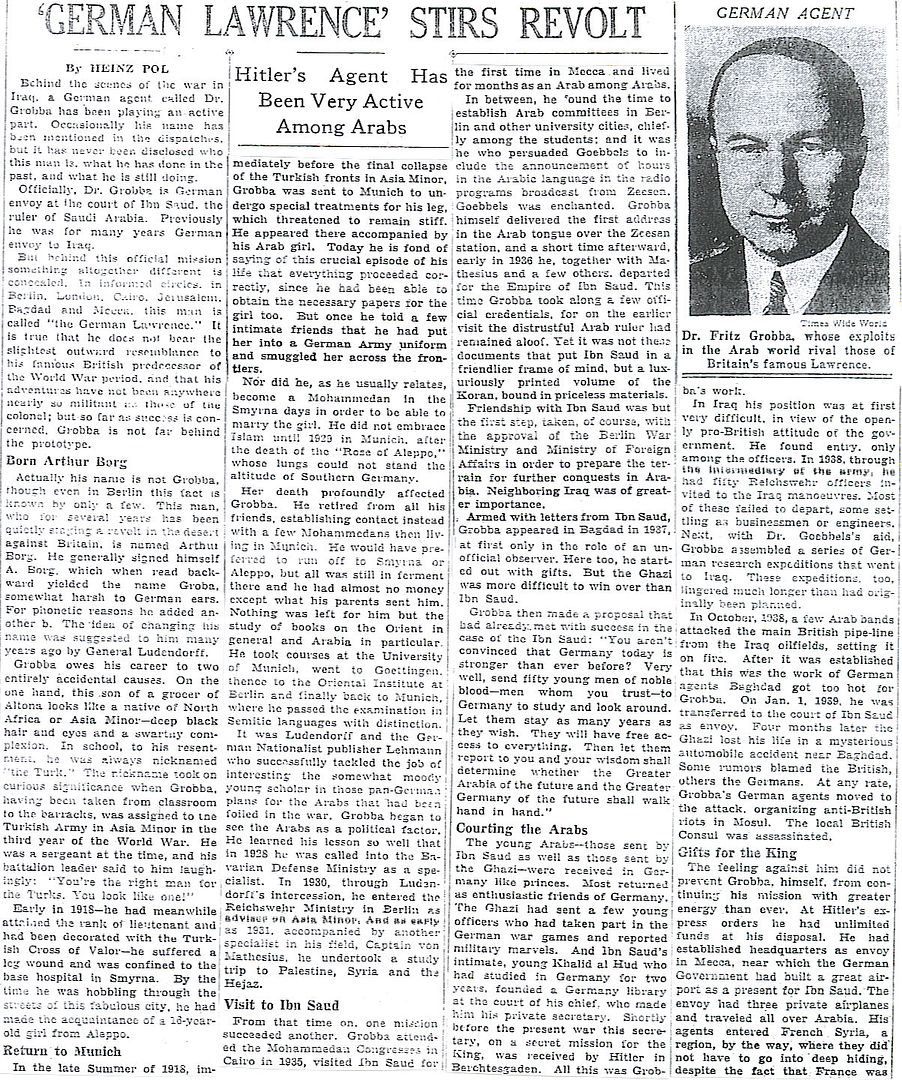




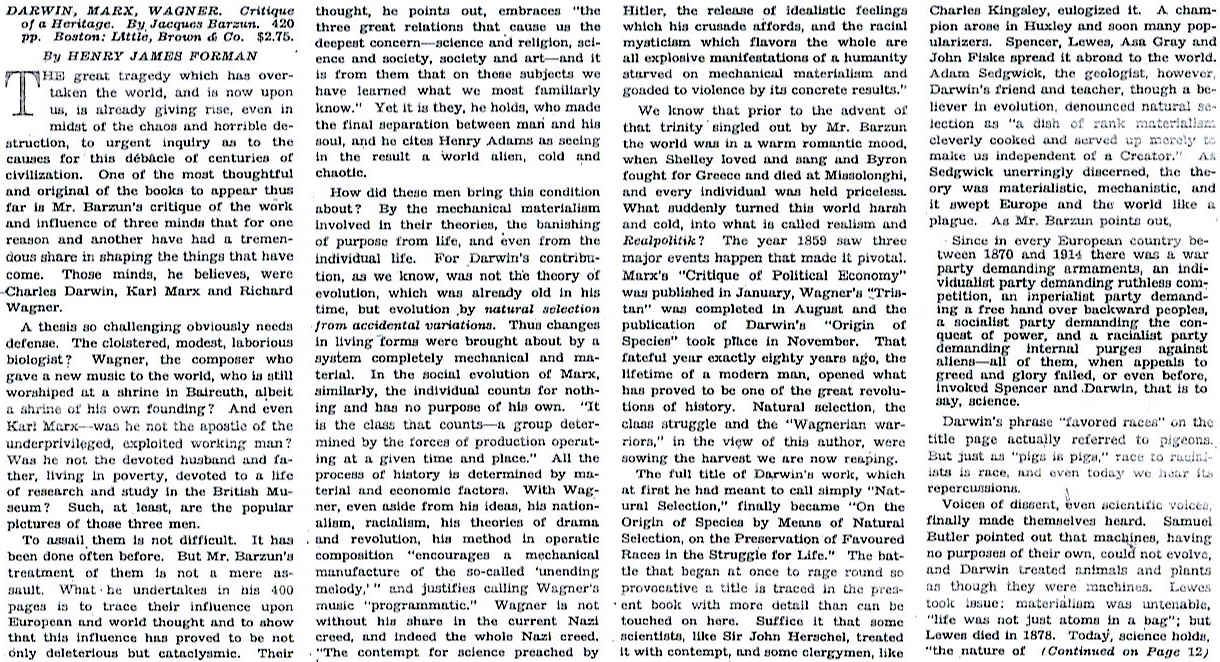

Gamble, Bruce. Darkest Hour: The True Story of Lark Force at Rabaul, Australia’s Worst Military Disaster of World War II. St. Paul, MN: Zenith Press, 2006. 270pp. ISBN 978-0-7603-2349-6.
“MORITURI VOS SALUTAMUS” – Gladiator’s hail to Caesar, “We who are about to die salute you”.
When one thinks of Rabaul during World War II, they often think of the Japanese fortress that dominated the north end of the island of New Britain. Fewer people realize that before the beginning of Japan’s expansion into the South Pacific, Rabaul was part of Australia’s “Northern Barrier” of defensive works. 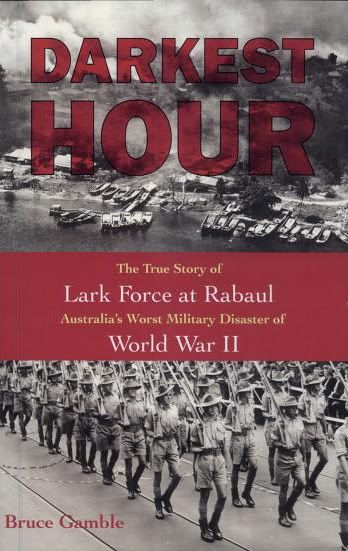 However, it would be a misnomer to say that Rabaul and the other defensive Australian positions were a force to be reckoned with. Manning the island of New Britain were approximately 1400 men of the 2/22nd Battalion designated Lark Force. This small force would face off against a Japanese landing force of over 5,000 troops supported by Vice Admiral Chuichi Nagumo and his 1st Air Fleet. Needless to say the fate of the men of the 2/22nd was sealed long before the first Japanese soldier set foot on the beach. These men on New Britain would all be locked in a desperate struggle for survival as the Japanese crushed their defensive positions. Most of them would not live to see the end of the war and many of those who did would carry the scars from their ordeal on this jungle island.
However, it would be a misnomer to say that Rabaul and the other defensive Australian positions were a force to be reckoned with. Manning the island of New Britain were approximately 1400 men of the 2/22nd Battalion designated Lark Force. This small force would face off against a Japanese landing force of over 5,000 troops supported by Vice Admiral Chuichi Nagumo and his 1st Air Fleet. Needless to say the fate of the men of the 2/22nd was sealed long before the first Japanese soldier set foot on the beach. These men on New Britain would all be locked in a desperate struggle for survival as the Japanese crushed their defensive positions. Most of them would not live to see the end of the war and many of those who did would carry the scars from their ordeal on this jungle island.
Bruce Gamble examines the plight of Lark Force and its supporting units in his book “Darkest Hour: The True Story of Lark Force at Rabaul, Australia’s Worst Military Disaster of World War II”. The stories that he relates are almost always tragic in nature. He begins by showing just how woefully inadequate the defenses of the island were. Gamble describes the two shore batteries that were all that protected Rabaul from invasion, both of them on the same hill one on top of the other. He describes the island’s air defenses that consisted of only two 3-inch anti-aircraft guns and one of the two had a crack in its breachblock. From air support consisting of too few and obsolete aircraft, to the two pounder anti-tank guns only supplied with solid steel shot, Gamble paints a picture of peril for these men as the Japanese approached them.
But the author is only getting started when describing the fighting condition of the 2/22nd. Once the Japanese landed and quickly overran the Australian defensive positions, the men of the 2/22nd were in a constant struggle just to survive. Gamble describes some of the atrocities committed by the Japanese as they took control of the island including the massacre of 160 Australians who surrendered on the Tol Plantation. Others escaped into the jungle only to be ravaged by malaria, beri beri, and the ever-present threat of starvation. In the end only 385 soldiers from New Britain and its neighboring defensive post on New Ireland would escape the Japanese and make it back to Australia. The rest would find themselves back in their old barracks at Rabaul which had been converted into a P.O.W. camp. But in the end most of these men would never see home again due to the cruelest twists of fate. Bruce Gamble makes mention of the worse tragedy to confront the men of the 2/22nd in his introduction and then revisits it in greater detail towards the end of his book. He describes the incident where the U.S. submarine Sturgeon sunk an unmarked maru while patrolling the South Pacific waters. Unbeknownst to them, on board that maru were over 1,000 prisoners from Rabaul being transferred to the island of Hainan. All of the enlisted men from the 2/22nd who had not escaped capture were aboard that ship.
This book is superbly written and very detailed as it recounts the individual events and stories that took place in the first months of 1942 on New Britain. Its focus on some of the individuals involved and following their story to their escape, or more often to their demise is gripping and heart wrenching. Bruce Gamble has done an excellent job in telling the story of Rabaul. The biggest fault with the book would have to be its citation. Gamble made the decision to print the book with only an abbreviated citation. This means that as far as looking at the source material he used in this book, there is often no entry for some of the data he has put out there. The author does point out, however, that there is a complete bibliography that can be provided separately from the book if desired. This makes this book difficult to use from an academic standpoint. It is clear by the use of the abbreviated citation, that the author is more focused on the entertainment value of the book than he is its academic relevance and for this reason, I would not recommend using this book as a scholarly resource unless you go through the trouble to obtain the full bibliography.
For the casual reader of history, I highly recommend this book. It will provide the reader with a unique aspect of the Second World War. This is one of those rare books that take the time to examine one of the lesser known aspects of the war. While there are many books that look at the major events of the conflict, there are too few out there that are like this one that take a minor story of the war and presents it in a way that is informative and interesting. This book is very hard to put down.
CougarGA7
News of the Week in Review
The Widening Sphere of War and Vital Points for the United States (map) – 8
Twenty News Questions – 9
Storm in Middle East Seems About to Break – 10
‘German Lawrence’ Stirs Revolt – 11-12
The Lengthening Shadow of Europe’s War Falls Across the Arab World (map) – 13
Answers to Twenty News Questions – 14
The New York Times Book Review
Darwin, Marx, Wagner: Critique of a Heritage, by Jacques Barzun. Reviewed by Henry James Forman – 15-17
Darkest Hour: The True Story of Lark Force at Rabaul, Australia’s Worst Military Disaster of World War II, by Bruce Gamble. Reviewed by CougarGA7 - 18
http://www.onwar.com/chrono/1941/may41/f18may41.htm
German battleship Bismark sets sail
Sunday, May 18, 1941 www.onwar.com
In the North Atlantic... The German battleship Bismark leaves Gdynia with the heavy cruiser Prinz Eugen for an Atlantic cruise under Admiral Lutjens. Various supply ships are already at sea.
In Occupied Yugoslavia... The Duke of Spoleto is proclaimed king of the Kingdom of Croatia. He will never visit his kingdom.
In the Mediterranean... German air attacks on the island of Crete continue. These are in preparation for the coming landing and are designed to subdue the garrison and compel the RAF to withdraw its few aircraft from Crete.
In Iraq... After outflanking an Iraqi blocking force the British relieving group, Kingcol, reaches the Habbaniyah airfield.
In Syria... General Dentz broadcasts, warning his troops in Vichy French controlled Syria to meet force with force. Airfields in Syria are bombed again by the RAF.
http://homepage.ntlworld.com/andrew.etherington/month/thismonth/18.htm
May 18th, 1941
POLAND: Gdynia: The German battleship BISMARK and heavy cruisers Prinz Eugen, under fleet commander Admiral Lutjens, put to sea to raid the Atlantic. A simultaneous sortie by the two battlecruisers from Brest is fortunately prevented by the damage inflicted by the RAF.
U-126 collided in Danzig Bay with the German Seeburg and suffered severe damages. (Dave Shirlaw)
ITALY: Rome: The Duke of Spoleto accepts the crown of Croatia from a Croatian delegation; he will be King Tomislav I.
Count Ciano writes: “The Croatians arrive with Pavelich at their head. They are in good humour and well-disposed toward us. I should say that they are better disposed than the Albanians when they offered the crown. The ceremony is more or less the same as that with the Albanians. In the streets, few and undemonstrative people. Not many realize the importance of the event. When His Majesty designated the Duke of Spoleto and the delegates saw him, there was a murmur of approval among them. Let us hope that it will be the same when they hear him speak. Everything went in due form; also the signing of the Acts, the content of which seemed to those who had knowledge of them to bear a better political meaning than was expected. It now remains to be seen if what we have built will be lasting. Maybe I am mistaken in my personal impression, but there is a feeling in the air that Italian domination in Croatia is to be temporary. And this is why the public is indifferent...” (Mike Yaklich)
Rome: The Italian High Command announced:
Our counteroperations against the Allies in North Africa have been completely successful. The enemy has been forced to retreat. Large numbers of prisoners and supplies have falled into our hands. Our aerial formations have attacked Tobruk. We bombed defence installations, troop assemblies and motor vehicles in the sector west of Sollum and shot down a British bomber and two enemy fighters in aerial combat. British aircraft in the Aegean raided Rhodes, causing insignificant damage. At Amba Alagi in East Africa, our troops have put up a heroic resistance under the personal command of the Duke of Aosta. Combat conditions are worsening hourly due to the lack of material, the losses we have suffered and the impossibility of tending and evacuating the wounded. An enemy assault was repelled in the area around Galla and Sidamo (Ethiopia).
MEDITERRANEAN SEA: PO Alfred Edward Sephton (b. 1911), remained at his post during an air attack on HMS Coventry, despite a terrible wound; he later died. (VC)
SYRIA: Damascus: The German News Bureau announced:
IRAQ: British forces reach Habbaniyah Air Field in Iraq.
On Friday the Iraqi air force successfully bombed several [British] ships outside the port of Basra.
ETHIOPIA: Amba Alagi: 18,000 Italian troops under the Duke of Aosta, finding themselves in a hopeless plight in the East African desert war surrender to the Allies.
CANADA: Corvette HMCS Baddeck commissioned. (Dave Shirlaw)
ATLANTIC OCEAN: At 2227, the unescorted Piako was hit underneath the bridge by one torpedo from U-107 about 130 miles southwest of Freetown, stopped, sent distress signals and was abandoned by the crew. A coup de grâce was fired at 2243, which hit in the after part, broke off the stern and caused the ship to sink. Ten crewmembers were lost. The master, 62 crewmembers and two gunners were picked up by HMS Bridgewater and landed at Freetown. (Dave Shirlaw)
http://worldwar2daybyday.blogspot.com/
Day 626 May 18, 1941
British battleship HMS Nelson and aircraft carrier HMS Eagle are sailing from Cape Town to Freetown in search of German armed merchant cruiser Atlantis. Just after midnight 226 miles South of St Helena off the coast of West Africa, they pass within 7 km of Atlantis without noticing her.
German dive bombers attack British hospital ship Aba 50 miles south of Crete. HMS Coventry comes to her aid and Petty Officer Alfred Sephton wins the VC for directing anti-aircraft fire despite a machinegun bullet partially blinding him. He dies of his injuries next day.
General Mosley Mayne, British commander of 5th Indian Division, lunches with Duke of Aosta in his mountain cave at Amba Alagi, Ethiopia, while Italian troops bury their dead and prepare to leave. Italians honour the Duke’s agreement not to destroy guns or stores and to dismantle or identify mines and boobytraps.
Falluja, Iraq. In addition to forces crossing the River Euphrates, 4 Vickers Valentia biplanes land a company of King’s Own Royal Regiment on the Baghdad road. RAF aircraft from Habbaniya bomb Iraqi positions in Falluja all day.
At 10.27 PM 130 miles West of Freetown, Sierra Leone, U-107 sinks British SS Piako (10 killed, 65 rescued by sloop HMS Bridgewater). Off Benghazi, Libya, British submarine HMS Tetrarch sinks Italian SS Giovinezza.
British reinforce Crete, in anticipation of German invasion. 700 Argyle and Sutherland Highlanders are transported from Port Said, Egypt, on troopship Glengyle and land overnight at Tymbaki, Crete.
Overnight, German battleship Bismarck and cruiser Prinz Eugen depart Gotenhafen, Poland, to attack British convoys in North Atlantic (Operation Rheinübung). Admiral Günther Lütjens, aboard Bismarck, commands both ships.
http://www.kbismarck.com/histoperi.html
18 May 1941 (Sunday): Operation Rheinübung commences.
1200. Leaves the berth in Gotenhafen and anchors in the bay to embark supplies and fuel.
http://www.bismarck-class.dk/bismarck/history/bisrhein1.html
On Sunday 18 May 1941, Admiral Lütjens briefed the officers of the Bismarck and Prinz Eugen on his intentions. The Bismarck and the heavy cruiser Prinz Eugen were to proceed independently to the island of Rügen, where the task force would be formed on the morning of 19 May 1941.
Towards midday on Sunday 18 May, the Bismarck and Prinz Eugen sailed out of the harbour of Gotenhafen. Just outside the harbour the ships dropped their anchors to refuel and take on additional provisions. The Operation “Rheinübung” (”Exercise Rhine”) had begun. They finally got underway in the early morning hours of Monday 19 May (the Bismarck sailed at 0200). The ships first circled around the Hel Peninsula, a thin finger of land jutting down from the Baltic coast, and then headed westward.

"The Bismark and the Prinz Eugen left Gdynia on May 18 , and their movement north was quickly learned by British intelligence.
But British planes sent to find them failed to, and on May 22 Churchill appealed to Roosevelt for help, saying,'Should we fail to catch them going out, your navy should surely be able to mark them down for us... Give us the news and we will finish the job.'
"Churchill dramatized his appeal by saying, if the Bismark and Prinz Eugen reached the Atlantic,
'they would alter the whole course of the war.'
"Roosevelt responded by sending navy patrol bombers and coast guard cutters stationed in Newfoundland toward Iceland to join the hunt."
Victor, Pearl Harbor Myth page 181
The point of course, is that any semblance of US "neutrality" is by "now" just fiction.
BISMARCK did NOT refuel. ‘He’ [Lindemann refused to use the commonly accepted ‘she’ for BISMARCK]will not refuel in Norway, either. Between those failures, and the damage to oil bunkers caused by HMS PRINCE OF WALES, BISMARCK will be forced to reduce her speed to 27 knots for most of the Rhine Exercise, a contributing cause to her eventual fate.
Again-the quotes are from 3 of the Bismarck survivors.
Adi. Adi. 'Wake Up!"
Franz's loud whisper was the only sound in the darkened sleeping quarters. First Adi and then the other men in nearby hammocks began to stir.
"What is it?
Why are you bothering me in the middle of the night?" Adi muttered testily.
"The ship is moving!" replied Franz. "Our mission has begun."
By now someone had turned on a light and others were sitting up, rubbing their eyes and talking in hushed voices. Then the room fell silent as Captain Lindemann's voice blared over the loudspeaker.
"Seamen of the Bismarck. Exercise Rhine has now begun. Tomorrow morning we will join forces with the cruiser Prinz Eugen. Together we will sail through the Danish islands and into the Norwegian Sea. When the moment is right we will break out into the Atlantic Ocean where we and the Prinz Eugen will attack convoys carrying food, fuel and weapons to our enemy. I know you will all perform your duty with courage and honor during our difficult and important mission. Three cheers for the Bismarck."
Three Sieg Heils rang out in sleeping quarters and duty stations throughout the long ship as it slid westward through the starless night. Adi, Franz and Heinz talked for awhile, then tried to get back to sleep. But this proved difficult now that the months of waiting were finally over.
Far above, on the bridge, Captain Lindemann was also wide awake. Unlike most of the sailors on the Bismarck, he was aware of the elaborate and careful planning that had gone into Exercise Rhine. He also knew how difficult and daring their mission was. There were only two routes into the Atlantic, but both passages were constantly patrolled by British ships and planes. Breaking through either of them would require absolute secrecy, perfect timing, great skill and luck.
The Bismarck Breaks Out- Occupied Poland, May 19, 1941 (Chapter 3)

It was almost midnight when Mullenheim-Rechberg (one of Bismarck's gunnery officers, and a survivor of her sinking) look a last walk on the Bismarck's deck before heading to his cabin. As he watched the distant Norwegian coast fade from view, he couldn't shake off the feeling of worry that he'd experienced earlier in the day when he'd watched the Prinz Eugen being refueled while the Bismarck had sat idly by.
Why had Admiral Lutjens failed to refuel the Bismarck? Mullenheim-Rechberg had served under Lutjens before and knew him to be a resourceful commander. Was the admiral, perhaps, losing his touch?
Suddenly Mullenheim~Rechberg noticed yellow, white and red lights flickering over the coast. If he had known what they meant he would have been even more worried. This was antiaircraft fire provoked by British bombers sent to attack the ships. The Germans didn't know it, but they had been spotted earlier that day by a high-flying British Spitfire reconnaissance plane.
The enemy was already on their trail.
http://www.2ndhmsmanchesterassoc.org.uk/1937-42_Cruiser_Page_2.html
18th May 1941 - MANCHESTER sailed from Scapa Flow en-route to Icelandic waters.
http://en.wikipedia.org/wiki/HMS_Manchester_%2815%29
http://www.elmira-ny.com/radio/
Sunday - 05/18/1941
NBC News - Walter Winchell
(15 minutes)

Todays topic covered by Winchell are:
- Terms of Surrender in Ethiopia
- Wife of Rudolf Hess is Arrested
- Goodwrench Strike Averted
- FDR Jr in Car Accident
- Shipyard Fire in Philadelphia
- Notable Births
- 69 Aliens Arrested by the FBI
- "I Am America" Rally
- The Nightingale Explodes in the Atlantic (an Orange Crush?)
- Battle Plans for Nazis in Middle East and Africa
- Hess' Flight to Scotland
- Turkey is Lost to Britain as Ally
- Vichy on American Food Aid (and consequences)
- Support for FDR
- Egart: Strike Agitator and Communist
- Dies Committee on Communist Activity
- Nazi Sympathizer send Letter to America
- Spanish Cabinet to be Reorganized
- Norwegian Resistance Paper
- Navy to Accept Men Aged 17 to 50
Also today on the nuclear front, Glenn Seaborg is continuing his work with plutonium (still called element 94 at this point):
Segrè and Seaborg conduct a test today showing that plutonium's cross section for slow-neutron fission is about 1.7 times that of U235 making it a better source for a nuclear weapon than uranium provided that enough of it can be produced.
British reinforce Crete, in anticipation of German invasion. 700 Argyle and Sutherland Highlanders are transported from Port Said, Egypt, on troopship Glengyle and land overnight at Tymbaki, Crete
The Thin Red Line
Sans Peur.
I look forward to getting home so I can listen to Walter. I assume this is the same broadcast abb posted on the previous reply.
Probably so, I am getting them from a different source, the one we’ve used for some of our breaking news threads. This year has been pretty slow for good breaking news radio reports, but I do have Elmer Davis for the 1st of June.
Yesterday you said this is an enduring mystery of the Bismarck saga. Is there speculation as to his Lindemann's reasoning for not refueling? I can only think of two possibles - the extra time in port required and loss of secrecy. But if they were stopping for provisions anyway both become moot.
Thanks for your efforts!
What a day in history! Bismark gets loose and fighting in Iraq and Libya...
The bio of the German “Lawrence” was fascinating, too. Now I have to look up what happened to him...
Disclaimer: Opinions posted on Free Republic are those of the individual posters and do not necessarily represent the opinion of Free Republic or its management. All materials posted herein are protected by copyright law and the exemption for fair use of copyrighted works.